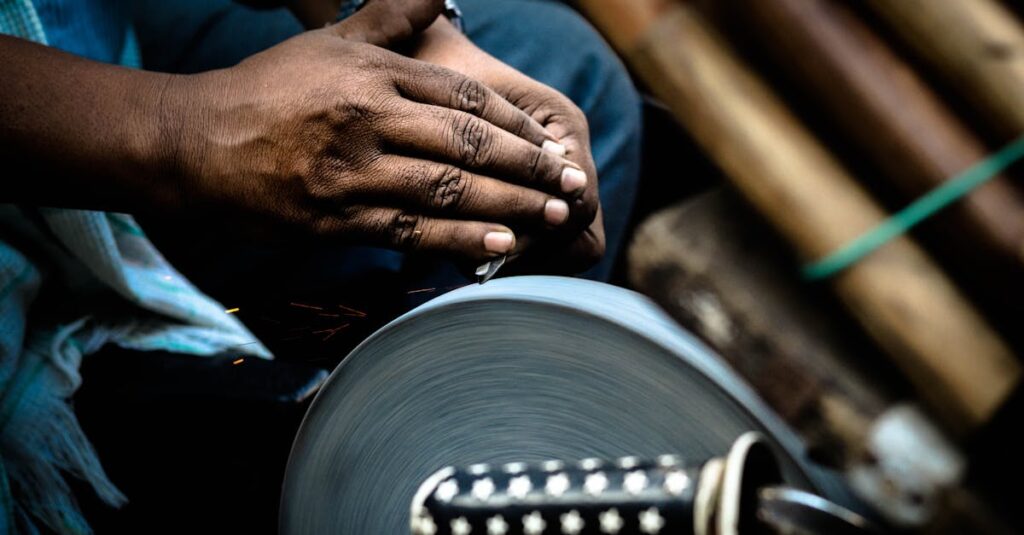Introduction
Mumbai is a city of contrasts, where the new constantly blends with the old. For many, the local markets are the heartbeat of the city, offering everything from fresh produce to traditional handicrafts. But as the city continues to evolve, so do these markets. From the hustle and bustle of Crawford Market to the quieter corners of Zaveri Bazaar, the way Mumbai’s markets operate is changing rapidly. Why is this happening, and what does it mean for both locals and visitors?
The Changing Landscape of Mumbai’s Markets
Once, the streets of Mumbai were filled with vendors selling everything from vibrant saris to delicious street food, each with their own niche. Today, while the charm remains, there’s a noticeable shift. One key factor driving this change is the city’s rapid modernization and urbanization. With more shopping malls, online shopping platforms, and larger retail chains popping up, the market scene in Mumbai is under pressure to adapt.
Take a walk through Colaba Causeway, and you’ll see a blend of old and new: traditional street vendors selling leather goods alongside upscale boutiques and global fashion brands. Even the iconic Chor Bazaar, with its eclectic mix of antiques, has seen its crowd dwindle, with online platforms offering similar products from the comfort of people’s homes.
The Rise of Niche Markets
While the large, crowded markets of Mumbai still hold their appeal, a new trend is emerging: niche markets catering to specific interests. These markets cater to people looking for something unique, often not found in mainstream stores.
For instance, at the Kala Ghoda Arts Precinct, you’ll find local artisans selling handmade jewelry, vintage art, and rare books. The market here is intimate, with a focus on craftsmanship rather than mass production. Similarly, the monthly flea markets in Bandra attract people seeking eco-friendly, sustainable products, organic foods, and unique vintage clothing.
Local markets like these not only offer something special, but they’re also keeping Mumbai’s cultural heritage alive. Artisans and small-scale vendors are finding ways to connect with a new generation of consumers who value individuality and sustainability over mass-market trends.
The Tech-Driven Transformation
While Mumbai’s street markets still rely on foot traffic, the influence of technology is starting to seep in. Today, many traditional vendors are going digital, adapting to the changing shopping behaviors of the city’s residents.
For example, the once bustling Crawford Market is now home to vendors who have embraced online platforms. You can now order your fresh produce from local vendors with just a few clicks, bypassing long queues and saving time. In fact, some shops in the market even offer home delivery services for their products.
Another significant change is the use of social media to promote local businesses. Instagram, in particular, has become a popular tool for Mumbai’s markets. Local stores and street vendors use it to showcase their products, from vintage furniture in Byculla to handmade bags in Versova, reaching an audience far beyond the physical market space.
The Impact of Tourism
Mumbai’s markets have always been a magnet for tourists, and this has had a significant impact on their evolution. Markets like Colaba Causeway and Crawford Market are famous for their mix of local goods and international products, drawing visitors from around the world.
But as tourism in Mumbai increases, so does the demand for more curated, tourist-friendly experiences. This has led to the rise of specialized markets such as the Street Food Festival held at the Gateway of India. Here, visitors can sample the best of Mumbai’s street food in a controlled environment, where vendors showcase their signature dishes.
Tourism has also led to more opportunities for local artisans. At places like the Linking Road flea market, you can now find artisanal products that cater to international tastes, from handwoven scarves to leather sandals. Tourists are not just looking for souvenirs; they want something authentic, and local markets are responding by offering more culturally significant products.
What the Future Holds for Mumbai’s Local Markets
While traditional markets continue to thrive, the future of Mumbai’s local market scene is undoubtedly intertwined with innovation. As the city grows, it’s clear that both the old and the new will coexist. Here are a few trends that are shaping the market’s future:
- Online Integration: As more vendors embrace technology, we can expect to see a greater overlap between physical and digital shopping. It’s no longer just about visiting the market in person; it’s about bringing the market to your fingertips.
- Eco-Friendly Focus: Sustainability is gaining importance, and many local markets are seeing an increase in eco-conscious buyers. Expect more sustainable, locally produced goods and fewer plastic-based products.
- Revitalization of Older Markets: With the influx of international tourists, older markets like Zaveri Bazaar and Crawford Market are being revitalized. You may find these areas getting cleaner, safer, and more accessible while still holding onto their authentic charm.
Conclusion
Local markets in Mumbai are evolving, but their essence remains the same: a place where culture, commerce, and community converge. Whether it’s the vibrant atmosphere of Chor Bazaar or the niche, artisanal products of the Kala Ghoda market, these markets provide a glimpse into the city’s heart. As the world changes, so too do the ways in which we shop, but one thing remains certain: Mumbai’s markets are far from disappearing. Instead, they’re adapting, thriving, and offering new experiences that bridge the past and the future.
The next time you visit a Mumbai market, take a moment to notice the small but significant changes happening around you. They might just surprise you with their creativity and resilience.

